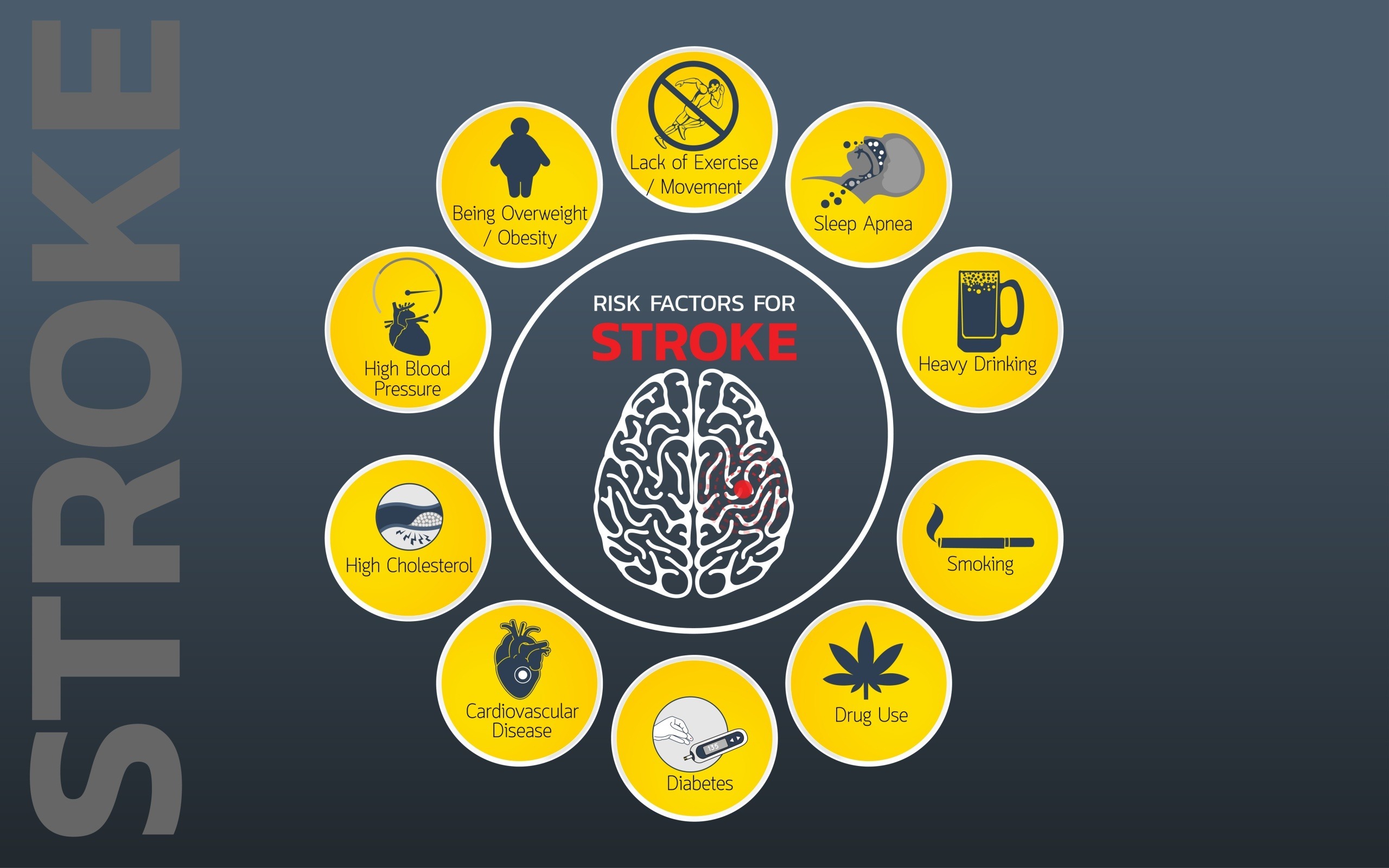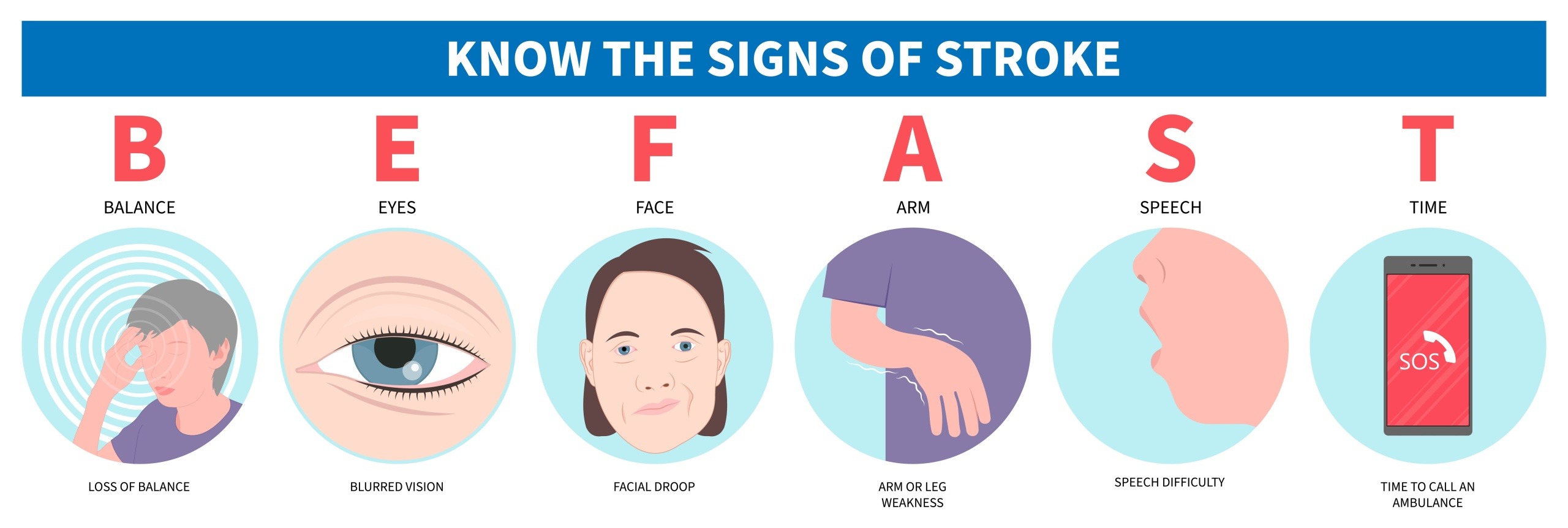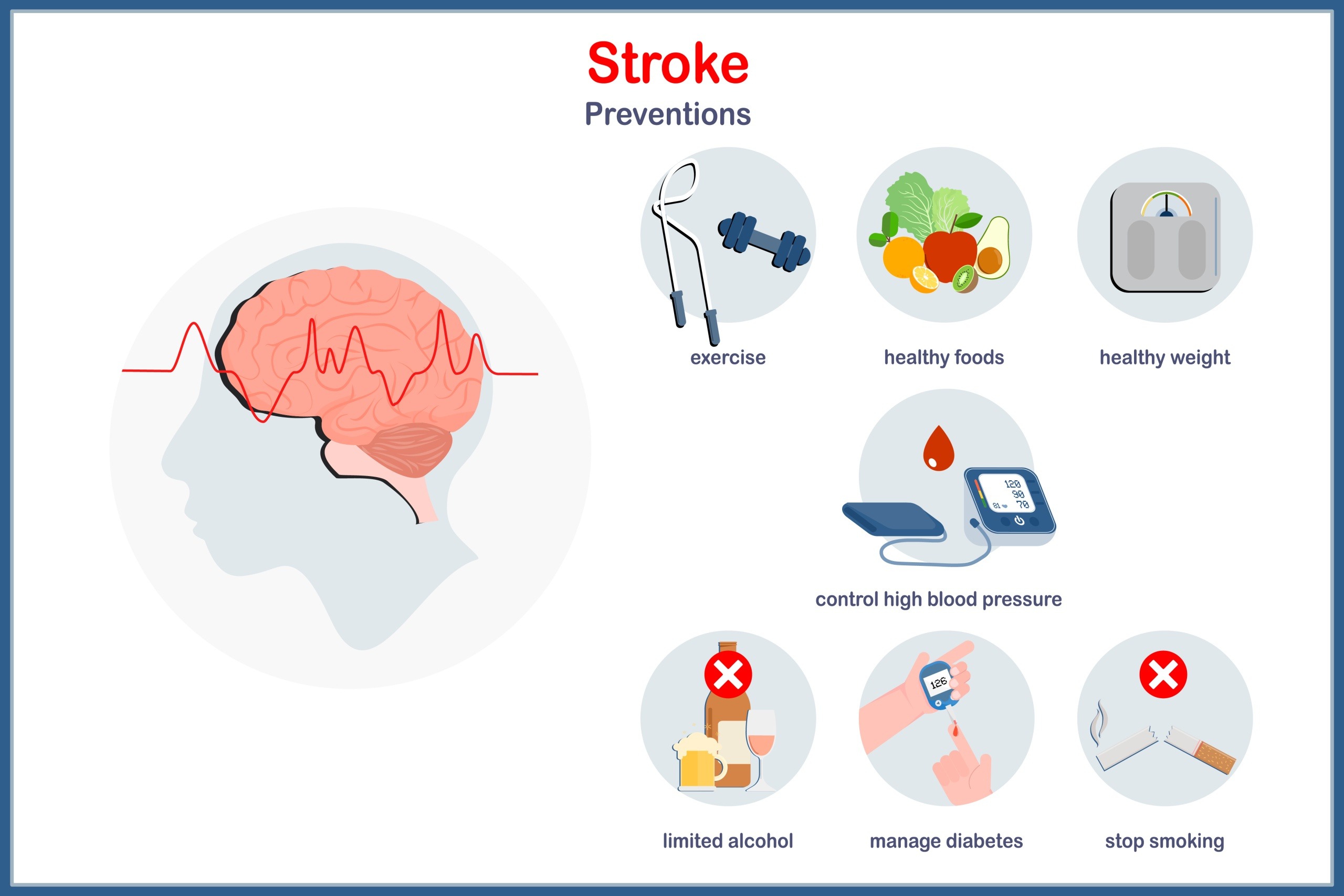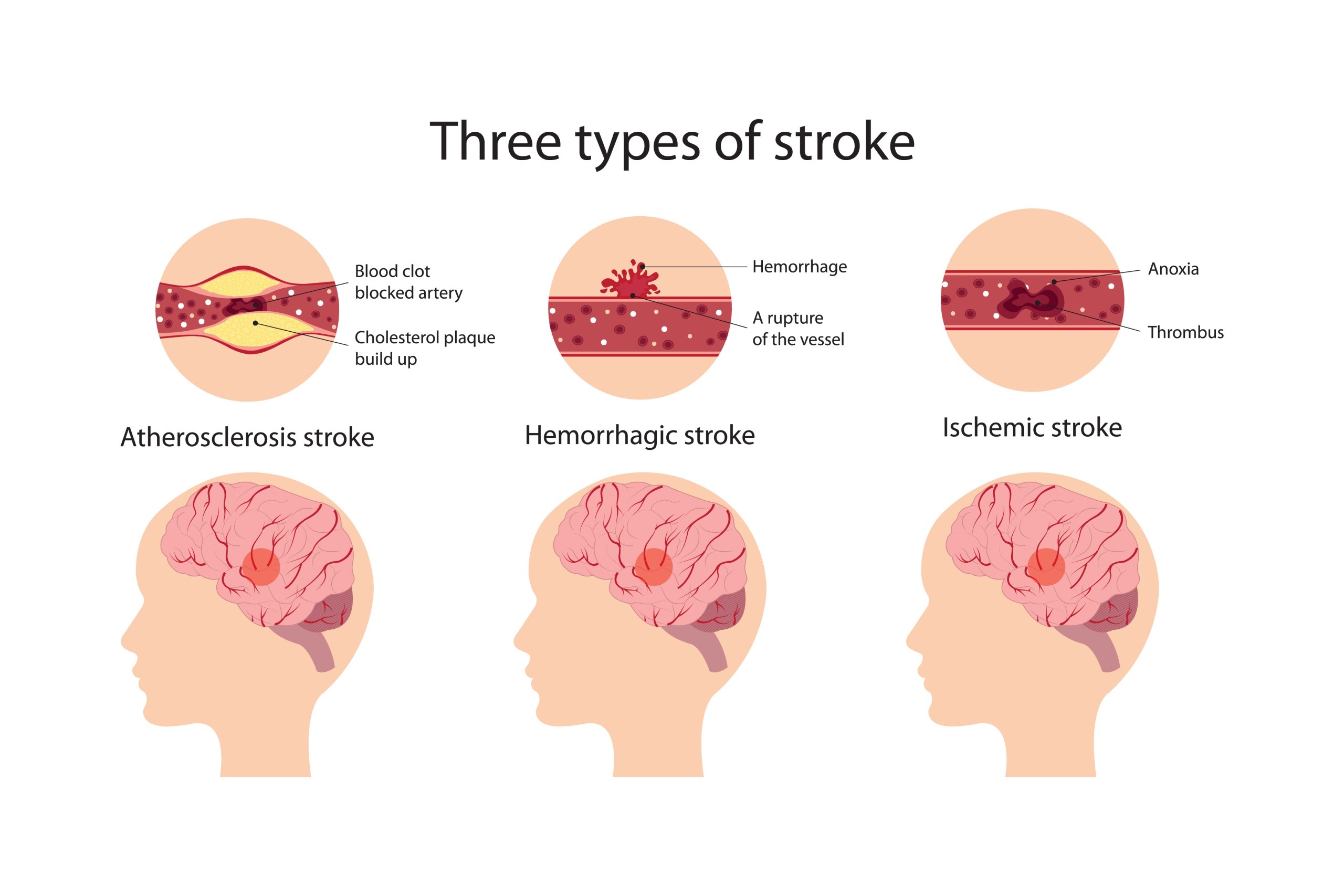Stroke: A Closer Look
A stroke is a life-threatening medical emergency that happens when the blood supply to a part of the brain is either interrupted or significantly reduced, preventing brain tissue from receiving the oxygen and nutrients it needs to function. Without a steady supply of blood, brain cells begin to die within minutes, leading to potential brain damage, long-term disability, or even death if immediate treatment isn’t administered.
Strokes are a leading cause of serious, long-term disability, and they can affect anyone, regardless of age or health background. However, understanding the different types of strokes, recognizing the symptoms early, and being aware of the risk factors can make a significant difference in outcomes.
Prompt medical intervention is crucial; the faster a stroke is diagnosed and treated, the greater the chance of minimizing brain damage and improving the chances of recovery. In the following sections, we will explore the various types of strokes, the warning signs that everyone should be aware of, the key risk factors that increase the likelihood of experiencing a stroke, and why timely treatment is essential in saving lives and reducing the impact of this serious condition.
Types of Stroke: A Breakdown
Strokes can be categorized into three main types, each with distinct causes and implications.
Ischemic stroke
Ischemic stroke is the most common type, accounting for about 87% of all strokes. It occurs when a blood clot blocks or narrows an artery leading to the brain, cutting off blood flow.
- Thrombotic Stroke: Occurs when a blood clot forms in one of the arteries supplying blood to the brain.
- Embolic Stroke: Happens when a blood clot or other debris forms away from the brain—often in the heart—and is swept through the bloodstream to lodge in narrower brain arteries.
Hemorrhagic Stroke
Hemorrhagic stroke occurs when a blood vessel in the brain bursts, causing bleeding in or around the brain. This type of stroke is less common but more deadly.
- Intracerebral Hemorrhage: The most common type of hemorrhagic stroke, where an artery in the brain bursts, flooding the surrounding tissue with blood.
- Subarachnoid Hemorrhage: Occurs when there is bleeding in the area between the brain and the thin tissues covering it, often due to the rupture of an aneurysm.
Transient Ischemic Attack (TIA)
A Transient Ischemic Attack (TIA), often called a “mini-stroke,” occurs when blood flow to the brain is temporarily blocked. Although TIAs don’t cause permanent damage, they are serious warning signs of a potential full-blown stroke and should not be ignored.
Risk Factors for Stroke: What You Should Know
Understanding the risk factors for stroke is crucial in prevention. Some risk factors are modifiable, while others, like age and family history, are not.

High Blood Pressure
High blood pressure, or hypertension, is the leading risk factor for stroke. It puts excessive pressure on the walls of blood vessels, making them more prone to rupture or blockage.
- Management: Regular monitoring, medication, reducing salt intake, and lifestyle changes like exercise can help manage hypertension.
Smoking
Smoking damages blood vessels, increases blood pressure, and raises the risk of blood clots, all of which contribute to stroke risk.
- Management: Quitting smoking can significantly reduce stroke risk. Support groups, nicotine replacement therapy, and medications can assist in quitting.
Diabetes
Diabetes increases the risk of stroke by contributing to the hardening of arteries and the buildup of fatty deposits in blood vessels.
- Management: Controlling blood sugar levels through diet, exercise, medication, and regular monitoring is essential.
High Cholesterol
High levels of cholesterol can lead to the buildup of plaque in arteries, which can restrict blood flow and increase the risk of ischemic stroke.
- Management: A healthy diet, regular exercise, and medications can help manage cholesterol levels.
Obesity
Obesity is linked to several stroke risk factors, including high blood pressure, high cholesterol, and diabetes.
- Management: Weight loss through a balanced diet, regular physical activity, and behavioral changes can reduce stroke risk.
Physical Inactivity
A sedentary lifestyle increases the risk of stroke by contributing to other risk factors like obesity, high blood pressure, and high cholesterol.
- Management: Engaging in regular physical activity, such as walking, running, swimming, or cycling, can improve overall cardiovascular health.
Unhealthy Diet
A diet high in saturated fats, trans fats, salt, and sugar can lead to high blood pressure, high cholesterol, and obesity, increasing stroke risk.
- Management: Adopting a heart-healthy diet rich in fruits, vegetables, whole grains, and lean proteins can help reduce stroke risk.
Excessive Alcohol Consumption
Heavy drinking can increase blood pressure and raise the risk of hemorrhagic stroke.
- Management: Limiting alcohol intake to recommended levels can reduce stroke risk.
Atrial Fibrillation
Atrial fibrillation is an irregular heartbeat that can lead to blood clots forming in the heart, which can then travel to the brain, causing an ischemic stroke.
- Management: Medications, lifestyle changes, and medical procedures can help manage atrial fibrillation and reduce stroke risk.
Symptoms of Stroke: Recognizing the Signs
Recognizing the signs of a stroke and acting quickly can make a significant difference in outcomes. The acronym F.A.S.T. can help you remember the most common symptoms:

- F – Face Drooping: One side of the face droops or feels numb. Ask the person to smile; their smile may be uneven.
- A – Arm Weakness: One arm feels weak or numb. Ask the person to raise both arms; one arm may drift downward.
- S – Speech Difficulty: Speech may be slurred, or the person may be unable to speak or be hard to understand. Ask them to repeat a simple sentence.
- T – Time to Call 911: If someone shows any of these symptoms, even if they go away, call 911 and get them to a hospital immediately.
Additional Symptoms:
- Confusion: Trouble understanding or speaking.
- Vision Problems: Sudden Blurred or blackened vision in one or both eyes or double vision.
- Severe Headache: A sudden, intense headache with no known cause, which may be accompanied by vomiting or dizziness.
- Sudden Dizziness or Loss of Balance: Difficulty walking, dizziness, or lack of coordination.
Treatment of Stroke: The Importance of Prompt Care
Stroke treatment depends on the type of stroke and how quickly the person receives medical care.
Ischemic Stroke Treatment
The primary goal in treating an ischemic stroke is to restore blood flow to the brain as quickly as possible.
- Clot-busting Drugs: Tissue plasminogen activator (tPA) is often used to dissolve clots and restore blood flow. It’s most effective when administered within three hours of symptom onset.
- Mechanical Thrombectomy: In some cases, doctors may use a catheter to physically remove the clot from the blocked artery.
Hemorrhagic Stroke Treatment
Treatment for hemorrhagic stroke focuses on controlling the bleeding and reducing pressure in the brain.
- Medications: Drugs may be used to lower blood pressure, prevent seizures, and reduce brain swelling.
- Surgery: In some cases, surgery may be necessary to repair the blood vessel or remove the pooled blood.
Post-Stroke Rehabilitation
Rehabilitation is a crucial part of stroke recovery, helping individuals regain as much independence as possible.
- Physical Therapy: Helps improve movement and coordination.
- Occupational Therapy: Focuses on regaining skills for daily activities.
- Speech Therapy: Helps with speech, communication, and swallowing difficulties.
- Psychological Support: Counseling and support groups can help address the emotional impact of a stroke.
Prevention of Stroke: Strategies for a Healthy Future
Preventing a stroke involves managing risk factors and leading a healthy lifestyle. Here are some key strategies:
 Healthy Diet
Healthy Diet
Eating a balanced diet can reduce stroke risk. Focus on foods that promote heart health and avoid those that contribute to risk factors.
- What to Eat: Fruits, vegetables, whole grains, lean proteins, and healthy fats.
- What to Avoid: Saturated fats, trans fats, excessive salt, and added sugars.
Regular Exercise
Regular physical activity can help control weight, lower blood pressure, and reduce cholesterol levels, all of which can lower stroke risk.
- Types of Exercise: Aerobic activities like walking, jogging, swimming, and cycling are beneficial.
- Goals: Aim for at least 150 minutes of moderate-intensity exercise each week.
Weight Management
Maintaining a healthy weight is essential for stroke prevention. Obesity increases the risk of high blood pressure, high cholesterol, and diabetes.
- Strategies: Combine a healthy diet with regular exercise.
- Goals: Aim for a BMI within the normal range.
Smoking Cessation
Quitting smoking is one of the most effective ways to reduce stroke risk. Smoking contributes to several stroke risk factors, including high blood pressure and blood clot formation.
- Support: Seek help through cessation programs, nicotine replacement therapy, and medications.
- Benefits: Reduces the risk of both ischemic and hemorrhagic strokes.
Alcohol Moderation
Limiting alcohol consumption can help reduce the risk of stroke, particularly hemorrhagic stroke.
- Guidelines: Stick to recommended limits—up to one drink per day for women and two drinks per day for men.
Managing Chronic Conditions
Controlling conditions like high blood pressure, diabetes, and atrial fibrillation is crucial for stroke prevention.
- Medications: Follow your healthcare provider’s recommendations for managing these conditions.
- Lifestyle Changes: Diet, exercise, and stress management are key components of managing chronic conditions.
The Role of In-Home Care in Stroke Recovery
For individuals recovering from a stroke, in-home care can be a vital part of the rehabilitation process. Here’s how in-home care can support stroke recovery:
- Personalized Care Plans
- In-home care services offer personalized care plans tailored to the specific needs of stroke survivors. This ensures that patients receive the appropriate support and therapy to aid in their recovery.
- Continuous Monitoring
- Caregivers can assist with ongoing monitoring of health indicators, such as blood pressure and glucose levels, to prevent further complications and promote recovery.
- Medication Management
- Proper medication management is critical in stroke recovery. In-home caregivers ensure that patients take their medications as prescribed, reducing the risk of missed doses or adverse drug interactions.
- Assistance with Daily Activities
- Stroke survivors may need help with daily activities, such as bathing, dressing, and meal preparation. In-home caregivers provide the necessary support to maintain a comfortable and safe environment.
- Therapy Support
- In-home care can include physical, occupational, and speech therapy services, helping stroke survivors regain their abilities in the comfort of their home.
- Family Support
- In-home care services provide peace of mind for family members, knowing that their loved one is receiving professional care. This support allows family members to focus on their own well-being while staying involved in their loved one’s recovery process.
Conclusion: Taking Control After a Stroke
Understanding stroke, its risk factors, symptoms, and treatment options is essential for prevention and recovery. By leading a healthy lifestyle, managing chronic conditions, and recognizing the signs of a stroke, you can reduce your risk and ensure a better outcome if a stroke does occur.
For those recovering from a stroke, in-home care offers comprehensive support, aiding in rehabilitation and improving the quality of life. If you or a loved one is recovering from a stroke, consider the benefits of in-home care as part of your recovery plan.
With the right care and support, stroke survivors can achieve significant improvements in their health and regain independence.


